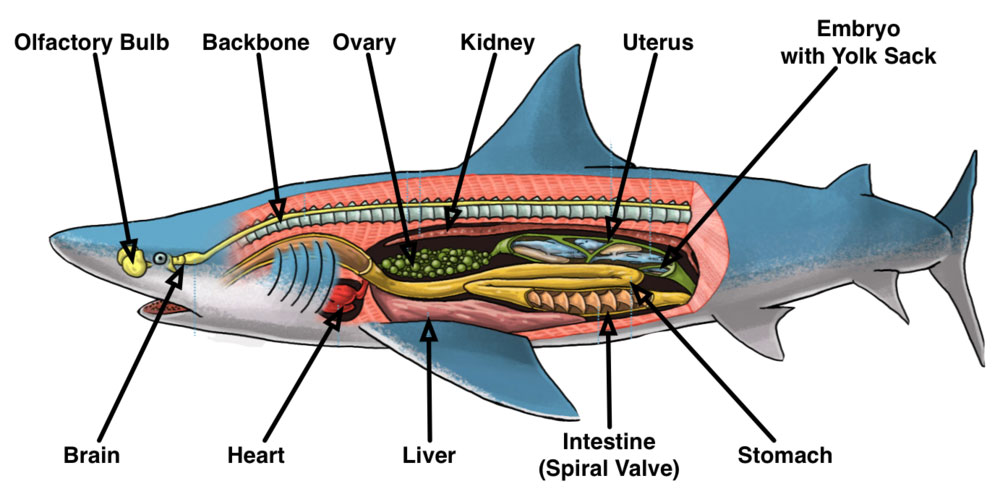What Makes a Shark a Shark?

No matter their size, all sharks have similar anatomy. Like other elasmobranchs (a subclass of animals that also includes rays and skates), sharks have skeletons made of cartilage—the hard but flexible material that makes up human noses and ears. This is a defining feature of elasmobranchs, as most fish have skeletons made of bone. Cartilage is much lighter than bone, which allows sharks to stay afloat and swim long distances while using less energy.
Every shark also has several rows of teeth lining its jaws. Unlike people, which have a limited number of teeth in their lifetime, sharks are constantly shedding their teeth and replacing them with new ones. A shark can lose and replace thousands of teeth in its lifetime! Not all shark teeth are the same, however. Some have pointed teeth for grabbing fish out of the water. Others have razor-sharp teeth for biting off chunks of prey, allowing them to attack and eat larger animals than bony fishes of the same size. Sharks that eat shellfish have flatter teeth for breaking shells. Filter-feeding sharks that sift tiny plankton from the water still have teeth, but they are very small and aren’t used for feeding.
Another defining feature of sharks is their array of gill slits. Unlike bony fishes, which have one gill slit on each side of their bodies, most sharks have five slits on both sides that open individually (and some shark species have six or seven). After water flows into a shark’s mouth as it swims, it closes its mouth, forcing the water over its internal gills. The gills extract oxygen from the seawater, after which the water is expelled through the gill slits behind its head. When they’re resting, many shark species pump water over their gills to make sure the oxygen never stops flowing. This is called buccal pumping and is used by many sharks that spend their time sitting still on the seafloor like nurse sharks (Ginglymostoma cirratum), angel sharks (Squatina sp.) and wobbegongs (Orectolobidae). But some sharks are unable to pump water this way and, if they stop pushing water into their mouths by swimming, will suffocate. These sharks include the great white shark (Carcharodon carcharias), mako shark (Isurus sp.) and whale shark (Rhincodon typus).
Article from: http://ocean.si.edu/sharks
NORTH SHORE SHARK ADVENTURES
Haleiwa Harbor
66-105 Haleiwa Rd
Haleiwa, HI 96712
Call 808.228.5900[:]

